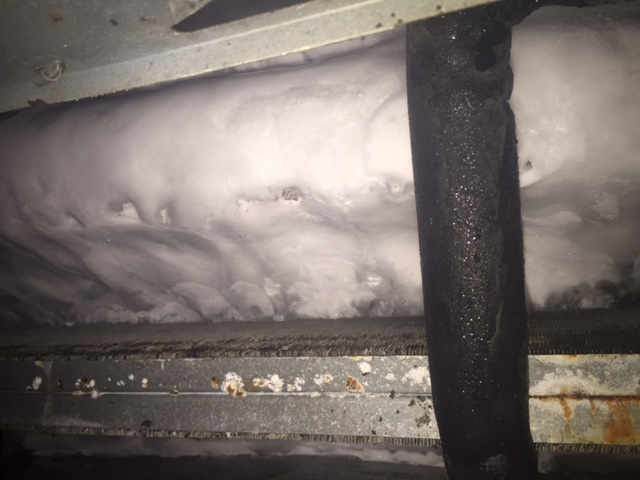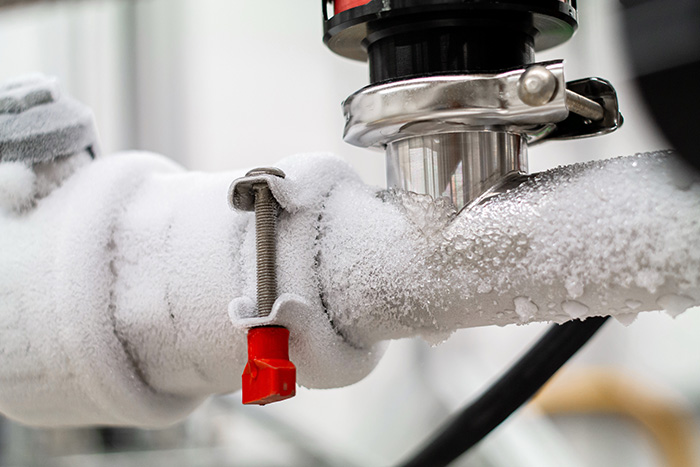The writer is making a few good pointers relating to Air Conditioner Frozen? How To Fix your Frozen AC Line overall in this article underneath.

Introduction
Discovering that your air conditioning pipe is frozen can be concerning, especially during hot summer season when you depend on your air conditioning system one of the most. Recognizing what to do in such a circumstance is important to avoid further damage to your air conditioning system and ensure your convenience inside your home.
Comprehending the Causes
Several variables can add to the freezing of an AC pipeline. Comprehending these causes can assist you attend to the problem properly.
Absence of Airflow
One common root cause of a frozen air conditioner pipe is inadequate air movement. When the airflow over the evaporator coil is limited, it can cause the coil to go down below freezing temperature, bring about ice formation on the pipeline.
Reduced Refrigerant Levels
Insufficient cooling agent degrees in your a/c system can likewise cause an icy pipe. Low refrigerant levels can trigger the stress in the system to go down, leading to the freezing of moisture on the evaporator coil.
Cold Weather Conditions
In colder climates, freezing temperatures outside can add to the cold of air conditioner pipelines. If your a/c device is not effectively shielded or if there are leaks in the ductwork, cool air can penetrate the system, triggering the pipeline to freeze.
Dirty Air Filters
Dirty or clogged air filters can restrict air movement in your air conditioner system, causing various concerns, consisting of a frozen pipeline. It's vital to replace or clean your air filterings system regularly to make certain proper airflow and protect against ice accumulation.
Signs of a Frozen Air Conditioner Pipe
Acknowledging the indicators of a frozen air conditioner pipe is important for punctual action.
Lowered Airflow
If you notice a significant decline in air flow from your vents, it might show a frozen pipe.
Ice Buildup on the Pipe
Visible ice accumulation on the cooling agent line or the evaporator coil is a clear indication of a frozen air conditioner pipeline.
Strange Sounds from the Unit
Unusual sounds, such as hissing or gurgling, originating from your air conditioner device can signify that there's ice present on the pipe.
Immediate Actions to Take
When faced with an icy air conditioning pipe, it's vital to act swiftly to prevent additional damage to your air conditioning system.
Turning off the air conditioning
The primary step is to switch off your air conditioning unit to avoid the system from running and intensifying the issue.
Checking for Blockages
Evaluate the area around the indoor system for any blockages that may be blocking airflow, such as furnishings or curtains.
Defrosting the Pipe
You can utilize mild techniques like placing towels taken in warm water around the icy pipeline to assist thaw it slowly.
Safety nets
Taking safety nets can assist stay clear of future occurrences of a frozen air conditioner pipe.
When DIY Methods Fail
If your efforts to thaw the pipeline or address other issues are not successful, it's time to employ a professional.
Relevance of Hiring a Professional HVAC Technician
A licensed HVAC technician has the knowledge and devices required to detect and repair concerns with your air conditioning system safely and efficiently.
Regular Maintenance Checks
Schedule normal upkeep checks with a specialist HVAC service technician to guarantee that your AC system is running effectively.
Changing Air Filters
Frequently change or clean your air filters to prevent air flow restrictions and preserve optimal efficiency.
Shielding Exposed Pipes
If your air conditioning pipelines are subjected to cool temperature levels, consider protecting them to stop freezing during winter months.
Seeking Professional Help
If DIY approaches fail to fix the concern or if you're uncertain concerning just how to continue, it's finest to look for support from a certified HVAC service technician.
Final thought
Managing a frozen AC pipe can be a discouraging experience, however recognizing exactly how to respond can help reduce damages and restore comfort to your home. By comprehending the causes, acknowledging the signs, and taking punctual action, you can effectively resolve the problem and avoid future incidents.
What to Do If Your AC Line Is Frozen
Make Sure All Supply and Return Air Vents Are Open
If you notice problems with airflow, the first thing you should do is check your supply and return vents. Supply vents distribute clean, conditioned air throughout your home. As this air becomes stale, it’s pulled into the return vent, where it’s reconditioned before being sent back out through the supply vent.
When these vents are closed, air won’t flow in the home. Before examining your AC, check the vents in every room and ensure they’re all open.
Check for a Dirty Air Filter
Another possible cause of limited airflow is a dirty air filter. Your air conditioner’s filters catch elements you don’t want to breathe in, such as dirt and dust. Over time, filters can become clogged, ultimately blocking air from flowing in and out. The lack of airflow can then cause the entire coil to freeze and will completely restrict any air from moving through it. The AC may need to be powered off for one to two days to allow the coil to thaw after replacing the filter to allow proper functioning of the unit. This debris can also accumulate on your AC’s evaporator coil, requiring a more serious repair. In general, air filters should be cleaned regularly (about every two weeks).
Assess Your Outdoor Unit
In addition to checking your AC, assessing the outdoor unit is a good idea. Also known as the condensing unit, it works with your interior unit to release heat outside. An issue with the outdoor unit can result in rising internal temperatures.
Overgrown Shrubs or Clogged Leaves
From leaves and twigs to shrubs and debris, there’s no shortage of outdoor elements that can accumulate around your condensing unit. When these elements get lodged inside the unit, they can block airflow. Fortunately, removing the blockage can solve the problem.
Sounds of a Broken Fan
Shrubs and leaves aren’t the only things that can impede your outdoor unit’s airflow. If the fan is broken, the unit won’t be able to properly get rid of heat — which means the internal temperature won’t go down. First, make sure the fan is spinning. If it is, check for the following sounds of a broken fan:
- Buzzing
- Rattling
- Screeching
- Hissing
- Clicking
Preventative Measures
Nobody wants to deal with a frozen AC line. In addition to causing problems with your air conditioner, they require professional repairs. On the bright side, there are preventative measures you can take to help ensure this issue doesn’t arise in the first place.
https://www.coopergreenteam.com/blog/what-to-do-if-ac-line-frozen

I found that piece of writing about Have a Frozen AC Line? Here’s How to Fix It while browsing on the web. Are you aware of someone else who is intrigued by the topic? Why not share it. Thanks a lot for your time. Please pay a visit to our blog back soon.
Set An Appointment
Comments on “The Air Conditioner Pipe Is Frozen - What Should I Do? Guidance for Homeowners”